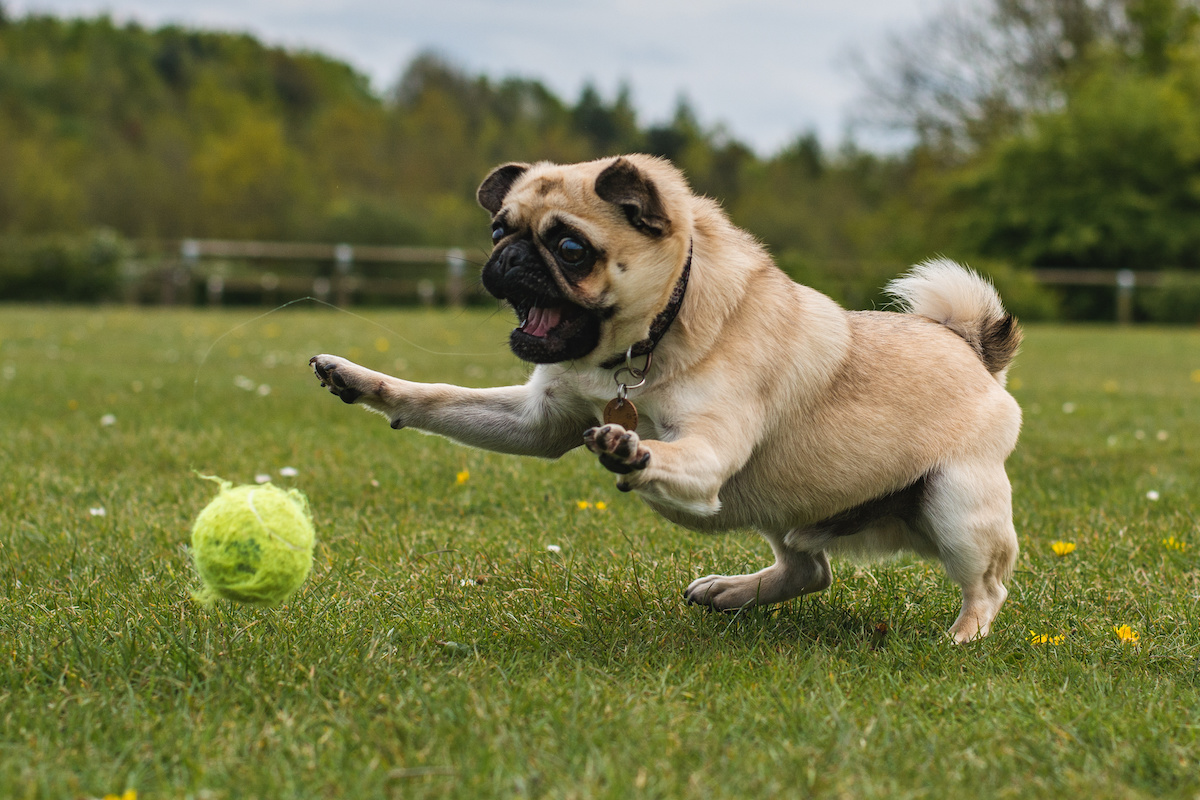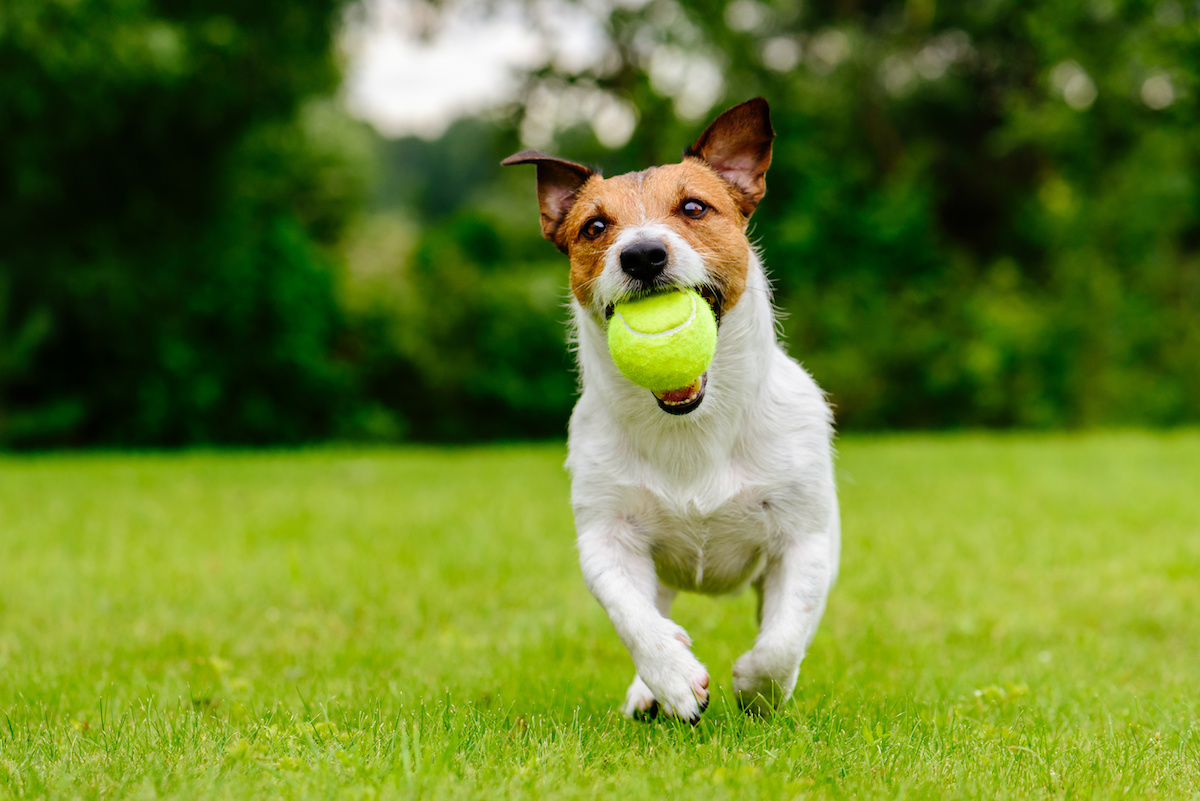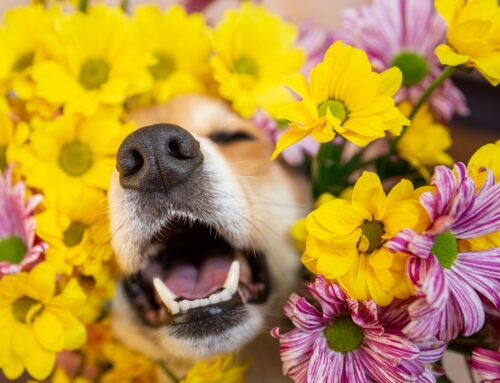As pet owners, we’ve all witnessed the joy and excitement our dogs experience when playing with their favorite toys. Among the most beloved of these toys is the humble tennis ball. But why do dogs love tennis balls so much? And what other types of toys are best for keeping our furry friends entertained and engaged?
In this blog, we’ll explore the psychology behind dogs’ love for tennis balls, and give some of our best recommendations for other types of dog toys to keep your canine companion happy and healthy.
Why Do Dogs Love Tennis Balls?
The age-old question…what is it about those bright yellow balls that bring dogs so much joy?
Let’s dive in!
1. It’s Their Natural Instinct to Love Tennis Balls
Dogs are natural predators, and many breeds have a strong instinct to chase and retrieve objects. Tennis balls mimic the size, shape, and texture of prey animals, triggering a dog’s hunting instincts and providing a satisfying outlet for their natural behaviors.
2. Tennis Balls are Great Physical Exercise (and They Know It)
Playing fetch with a tennis ball provides dogs with much-needed physical exercise, helping them burn off excess energy and stay fit and healthy. The repetitive motion of chasing and retrieving the ball also helps improve coordination and agility.
3. Dogs Stimulate Their Brain When They Play with Tennis Balls
In addition to physical exercise, playing with a tennis ball offers dogs mental stimulation and enrichment. The anticipation of chasing and catching the ball engages their senses and provides a mental challenge, keeping their minds sharp and engaged.
4. Tennis Balls Mean Time for Bonding and Interaction
Playing fetch with a tennis ball is a fun and interactive activity that strengthens the bond between dogs and their owners. It fosters positive social interactions and reinforces the human-animal bond through shared play and mutual enjoyment.
5. Tennis Balls are Satisfying Chew Toys
While tennis balls are primarily used for fetching, many dogs also enjoy chewing on them. The texture of the ball provides a satisfying chewing experience that can help alleviate boredom and prevent destructive chewing behavior.

Other Types of Dog Toys
While tennis balls are a favorite among many dogs, there are plenty of other types of toys that can provide hours of entertainment and enrichment for your furry friend.
Here are some popular dog toy options:
1. Rope Toys
Rope toys are great for interactive play and tug-of-war games. They’re durable and come in a variety of sizes and shapes, making them suitable for dogs of all breeds and sizes.
2. Chew Toys
Chew toys are essential for promoting healthy chewing habits and dental hygiene. Look for toys made from durable materials like rubber or nylon that are designed to withstand heavy chewing.
3. Puzzle Toys
Puzzle toys are excellent for mental stimulation and problem-solving. They often contain hidden treats or compartments that dogs must manipulate to access the rewards, keeping them entertained and engaged for hours.
4. Plush Toys
Plush toys are soft and cuddly, making them perfect for dogs who enjoy snuggling and carrying their toys around. Look for plush toys with reinforced stitching and durable materials to prevent tearing and ingestion of stuffing.
5. Interactive Toys
Interactive toys, such as treat-dispensing balls or puzzles, provide mental stimulation and encourage dogs to use their problem-solving skills to earn rewards. These toys are great for keeping dogs engaged and entertained when home alone.
6. Squeaky Toys
Squeaky toys are irresistible to many dogs and can provide hours of entertainment. The sound of the squeaker mimics prey animals, triggering a dog’s instinct to hunt and play.
7. Water Toys
For dogs who love to swim, water toys like floating discs or balls are a must-have. These toys are designed to float on water, making them perfect for games of fetch at the beach or pool.
8. Durable Toys
For aggressive chewers or dogs who tend to destroy toys quickly, look for toys made from tough, durable materials like rubber or heavy-duty nylon. These toys are built to last and can withstand even the most enthusiastic chewers.
Choosing the Right Toys for Your Dog
Selecting the right toys for your dog is essential to ensure they stay engaged, entertained, and safe during playtime. Consider the following factors when choosing toys for your canine companion:
1. Size and Breed
- Small Dogs
-
-
- For small breeds, such as Chihuahuas or Toy Poodles, choose toys that are appropriately sized for their small mouths and delicate jaws. Look for toys that are easy to carry and chew, such as small plush toys or rubber balls.
-
- Medium to Large Dogs
-
-
- Medium and large breeds, such as Labrador Retrievers or German Shepherds, require more durable toys that can withstand their strong jaws and powerful chewing. Opt for larger toys made from tough materials like rubber or nylon that won’t easily break apart.
-
- Breed Considerations
-
- Consider your dog’s breed-specific traits and tendencies when selecting toys. For example, retrievers may enjoy fetch toys like balls or flying discs, while terriers may prefer interactive toys that stimulate their hunting instincts.
2. Age and Activity Level
- Puppies
-
-
- For puppies, choose toys that are soft, gentle on their developing teeth, and safe for chewing. Look for plush toys with reinforced seams or rubber toys specifically designed for teething puppies.
-
- Adult Dogs
-
-
- Adult dogs may enjoy a variety of toys that cater to their activity level and interests. Consider interactive toys that provide mental stimulation, such as puzzle toys or treat-dispensing balls, to keep them engaged and entertained.
-
- Senior Dogs
-
- Senior dogs may have different play preferences and physical limitations. Choose toys that are easy to grip and manipulate, such as soft plush toys or interactive puzzles that don’t require strenuous physical activity.
3. Safety
Always prioritize safety when choosing toys for your dog. Avoid toys with small parts or loose pieces that could pose a choking hazard, and inspect toys regularly for signs of wear and tear.
4. Supervision
Supervise your dog when playing with toys, especially if they’re prone to chewing or destroying them. Remove any toys that become damaged or worn to prevent ingestion of small pieces.
5. Variety
- Rotating Toys
-
-
- Provide your dog with a variety of toys to keep playtime exciting and stimulating. Rotate toys regularly to prevent boredom and maintain your dog’s interest in their toys.
-
- Texture and Shape
-
- Offer toys with different textures and shapes to appeal to your dog’s senses and encourage exploration. Some dogs may prefer soft plush toys, while others may enjoy the texture of rubber or rope toys.
6. Play Preferences
- Interactive Toys
-
-
- Consider your dog’s play preferences when choosing toys. Some dogs may enjoy interactive toys that require them to problem-solve or work for treats, while others may prefer toys they can chew on independently.
-
- Fetch Toys
-
-
- Dogs that love to chase and retrieve may enjoy fetching toys like balls, frisbees, or flying discs. Choose durable options that can withstand repeated use and won’t easily break or become damaged.
-
- Squeaky Toys
-
- Many dogs are attracted to toys that make noise, such as squeaky toys. These toys mimic the sounds of prey animals and can provide hours of entertainment for dogs with a strong prey drive.

Dogs Love All Toys, But Tennis Balls Reign Supreme
So, why do dogs love tennis balls? Well, they love them for a variety of reasons, including their instinctual appeal, physical exercise benefits, and mental stimulation.
However, there are many other types of toys that can provide similar levels of enjoyment and enrichment for your furry friend. By offering a variety of toys that cater to your dog’s size, age, and play preferences, you can ensure that they stay happy, healthy, and entertained for years to come.
If you have any questions or need recommendations for dog toys, don’t hesitate to reach out to the Animal Care Center for expert advice and assistance.






